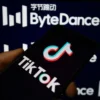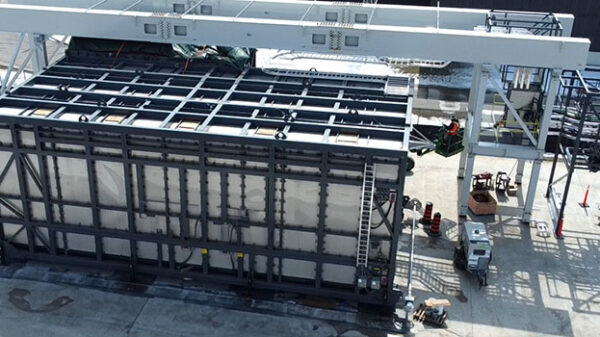DeepSeek, a relatively unknown Chinese AI startup, made waves in the markets with its latest AI model, DeepSeek-V3.
DeepSeek’s AI assistant shot to the number 1 most downloaded spot on Monday. Some U.S. tech industry observers worry that the Chinese startup has caught up with leading American companies in generative AI.
Originally launched towards the end of 2024, this model has demonstrated capabilities that rival those of leading American AI models. However, it came at a fraction of the cost and computing power.
The model’s development is seen as a significant milestone, showcasing China’s progress in AI despite stringent U.S. export controls on high-performance computing chips. DeepSeek-V3 was trained using approximate1ly 2,000 GPU chips, costing around USD$5.57 million, a stark contrast to the costs associated with similar U.S. models which can run into the hundreds of millions or even billions.
But it’s not just the cost-effective training that’s drawn attention.
The company has used reinforcement learning to enhance model performance, particularly in reasoning capabilities. This method reduces reliance on traditional supervised learning, allowing for more cost-efficient and scalable AI development.
The announcement of DeepSeek-V3 led to immediate repercussions in the stock market, particularly affecting tech stocks.
Chip giant Nvidia Corp (NASDAQ: NVDA) saw a historic drop of nearly USD$600 billion in market value on January 27, 2025. This was spurred on by investor worries about the future demand for high-end AI chips if models like DeepSeek could achieve similar results with less.
Read more: Behemoth AI project ‘Stargate’ to revolutionize cancer treatment, Ellison claims
Read more: Twilio shares jump 22% on strong Q4 results and optimistic take for the next two years
Data centres to use as much electricity as Japan by 2026
The ripple effect rolled through even peripherally related stocks like Canadian uranium issues like Denison Mines (TSE: DML)(NYSEAMERICAN: DNN)(FRA: IUQ), Cameco Corporation (TSE: CCO) (NYSE: CCJ), each of which endured double digit drops tied to the Chinese AI chatbot.
The International Energy Agency predicts data centres will consume as much electricity as Japan by 2026. This is more than double their presnet demand. Furthermore, Analysts view Cameco as one of the Canadian companies poised to benefit from an AI-driven electricity boom.
Furthermore, shares of Canadian utility TransAlta Corporation (TSE: TA) plunged by as much as 22 per cent during Monday’s trading session. The Calgary-based company announced it is negotiating with “multiple hyperscalers” to develop data centres in Alberta.
Beyond that, renewable energy stocks, particularly those tied to the infrastructure powering data centres, faced notable pressure. Companies like Brookfield Renewable Partners (NYSE: BEP) and Algonquin Power & Utilities (TSE: AQN) (NYSE: AQN) saw modest declines, likely due to concerns over how global energy demand might shift with China’s advancements in AI.
In the cryptocurrency market, tokens linked to AI and data processing initially surged as speculators bet on increased interest in AI-related blockchain solutions.
Additionally, major cryptocurrencies like Bitcoin and Ethereum saw slight downturns as traders reevaluated global demand for energy-intensive mining operations.
Read more: French gem Mistral AI reveals plans to go public in Davos
Read more: Top AI bots can’t be trusted to provide accurate historical info, study reveals
DeepSeek pricing strategy has caused AI tech disruption
However, not everyone thinks this development is worth the hype it’s generated.
“The models they built are fantastic, but they aren’t miracles either,” said Bernstein analyst Stacy Rasgon.
“They’re not using any innovations that are unknown or secret or anything like that. These are things that everybody’s experimenting with.”
The small Hangzhou startup behind DeepSeek originally came out of a hedge fund in 2023. Presently, it focuses primarily on developing open-source AI models, though little else is known about the company.
Some analysts question DeepSeek’s claim that the tech cost under USD$6 million to build and train, arguing that the figure likely only accounts for computing power. However, Sheldon Fernandez, founder of Darwin AI, indicated that even if you triple DeepSeek’s estimated costs, it would still remain significantly cheaper than its competitors.
DeepSeek released its open-source DeepSeek-R1 model on Jan. 20, which uses DeepSeek-V3 as its foundation. This release allows developers and researchers to examine the model’s inner workings. It also allows them run it on their own infrastructure, and build upon it. However, the training data remains unavailable.
Fernandez explained that this approach disrupts competitors’ business models. These typically rely on charging companies monthly fees for access to advanced AI features.
Regardless, DeepSeek’s aggressive pricing strategy has forced major Chinese tech companies like Baidu, Alibaba, and Tencent to slash their AI model prices. This has initiated a price war in the Chinese AI market. The effects of this war have made AI services more accessible and also pressuring profit margins.
Read more: Top AI bots can’t be trusted to provide accurate historical info, study reveals
Read more: French AI startup Mistral solidifies spot in the big leagues with C$8.6B valuation
DeepThink is AI’s “Sputnik moment”
DeepSeek is making headlines because it developed advanced AI despite U.S. efforts to maintain dominance in AI development. In 2022, the U.S. restricted computer chip exports to China, hindering its progress in advanced supercomputing.
Researchers trained the DeepSeek-V3 model using Nvidia’s H800 chips, according to the development paper. These chips were initially designed as reduced-capability products to bypass U.S. restrictions on sales to China. Further, they were later banned under new U.S. sanctions.
Many view DeepSeek’s latest AI models as competitive with those of OpenAI and Meta Platforms (NASDAQ: META), which rely on high-end chips and vast computing power.
The Silicon Valley venture capitalist, Marc Andreessen, described DeepSeek’s R1 model as AI’s “Sputnik moment” in a post on X on Sunday. He likened it to the Soviet Union’s launch of the Sputnik satellite, which triggered the space race with the U.S. in the late 1950s.
DeepSeek sets itself apart from competitors like OpenAI by making its models “open source,” allowing anyone to access and modify key components, though the company has not revealed the data it used for training.













